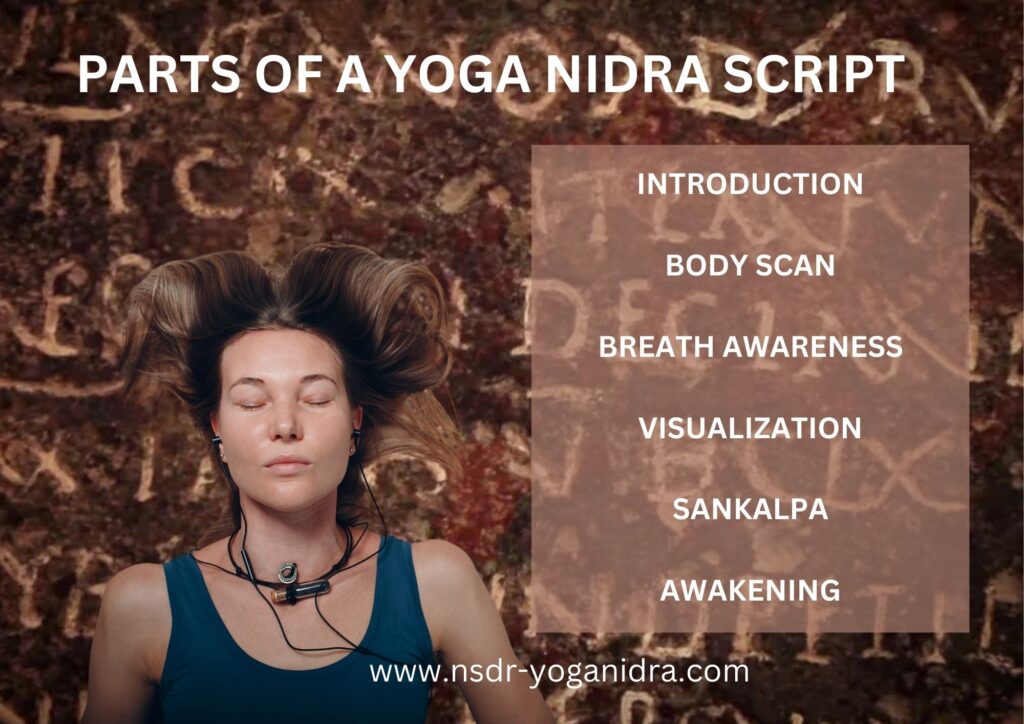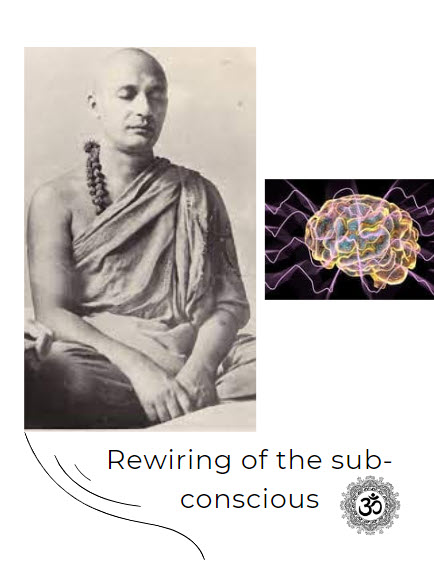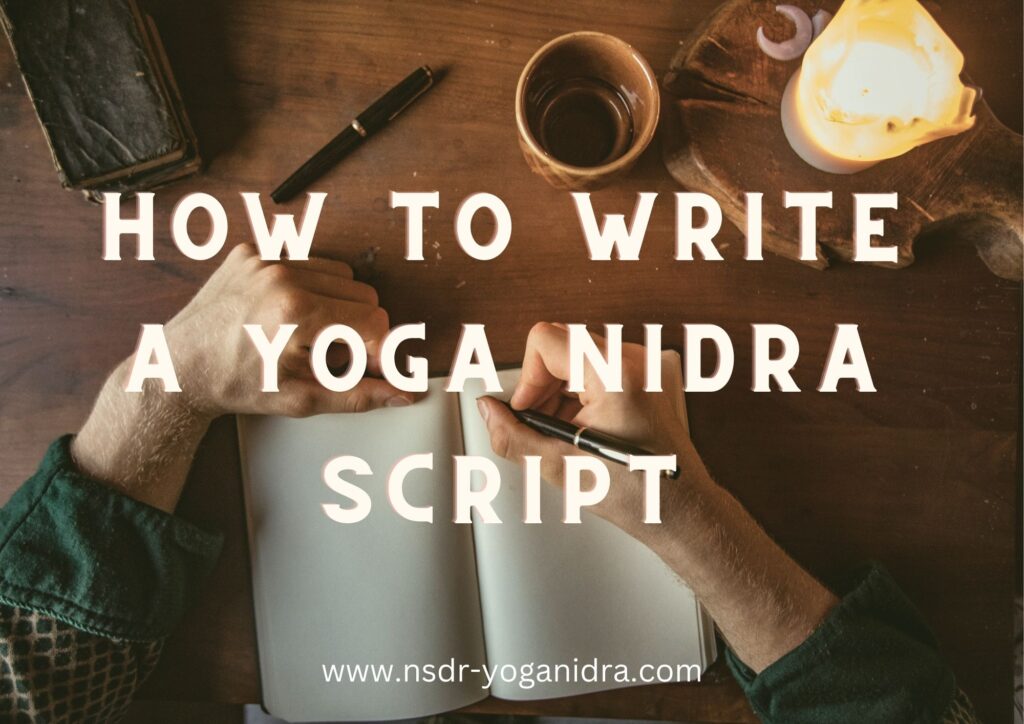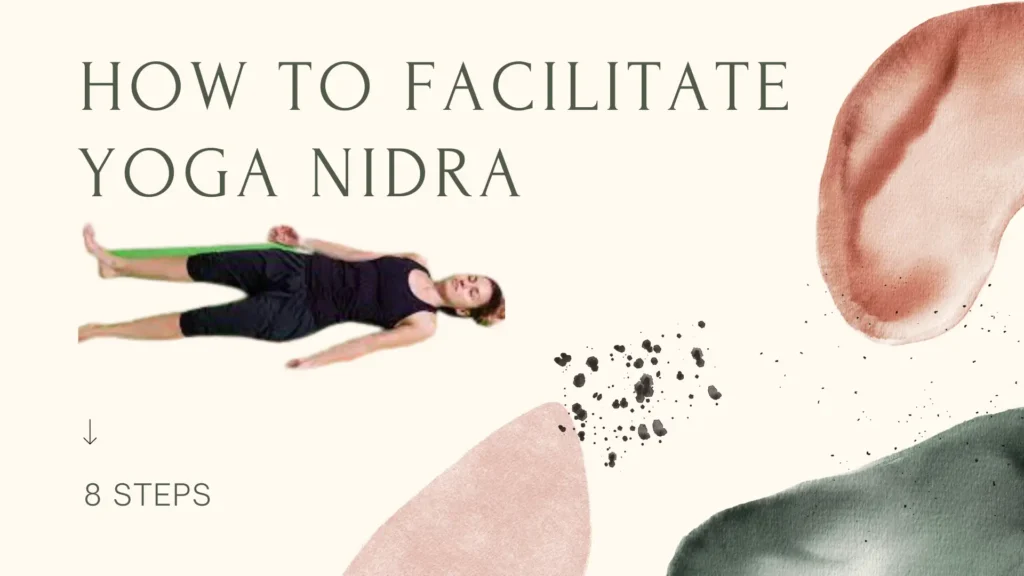How to write a yoga nidra script that keep people coming back for more.
In this case, less is more. Taking people through Yoga Nidra sounds easy enough though it is so much more nuanced than just putting on some music and calling out parts of the body to take your attention to. It is essential that Yoga teachers are trained to pace themselves, follow a systematic pattern of yogic relaxation which has many different variations that one can be guided through. Most of all, how to write Yoga Nidra scripts is a science in itself and can be used as a visual guide so teachers remember to take their students through correct formats and leave a more powerful and lasting impact on their health and well-being.
Yoga Nidra scripts serve as the guiding blueprint for leading practitioners through a deeply relaxing and transformative meditation experience. Crafting an effective Yoga Nidra script requires careful consideration of language, pacing, and thematic elements to ensure a seamless and impactful journey for participants. Let’s explore the intricacies of how to write a Yoga Nidra script, drawing insights from various schools of thought and traditions.
Understanding the Essence of Yoga Nidra Scripts
Yoga Nidra scripts are meticulously crafted narratives designed to guide practitioners into a state of deep relaxation and heightened awareness. They typically consist of verbal cues, visualizations, and instructions aimed at inducing a state of conscious relaxation while maintaining a level of awareness. The language used in the script should be simple, clear, and soothing, allowing practitioners to effortlessly follow along and immerse themselves in the experience.

We found in our classes that people would effortlessly fall into deep relaxation with clear instructions and effective time tested scripts and have wonderful transformative experiences. You do not need to reinvent the wheel to find impact. Consistency and protocols can prove to be very rewarding. Try a yoga nidra here.

Incorporating Traditional and Scientific Principles in Yoga Nidra script
When writing a Yoga Nidra script, it is essential to strike a balance between traditional wisdom and scientific principles. Traditional Yoga Nidra scripts often incorporate elements of ancient yogic philosophy, such as chakra visualization and Sankalpa (intention setting) like the scripts at the Bihar School of Yoga, while modern interpretations may integrate evidence-based practices from neuroscience and psychology. By combining these approaches, practitioners can create a script that honors the rich tradition of Yoga Nidra while catering to the needs and preferences of contemporary practitioners. The entire process of body scan to setting intention is a detailed process with science backed benefits.

You have to know your group mind-set too. Some groups may be open to chanting Om while others may be uncomfortable closing their eyes because they have past trauma associated with certain movements. In that case, knowing how to word your Yoga Nidra is very important. Using words like ‘soften your gaze’ , instead of ‘close your eyes’, or just Humming instead of chanting the Shanti Mantra, because it may be associated with a certain cultural context or for people who may not know Sanskrit is perfectly acceptable.
Key Components of a Yoga Nidra Script
A well-crafted Yoga Nidra script typically includes the following components:

1. Introduction:The script begins with a brief introduction, setting the tone for the practice and establishing rapport with the participants. This section may include a short relaxation technique or breathing exercise to help participants transition into a state of receptivity.
2. Body Scan: The body scan is a central component of Yoga Nidra, where practitioners are guided through a systematic awareness of each part of the body. This helps to release physical tension and cultivate a sense of relaxation and presence.

3. Breath Awareness:Breath awareness techniques are integrated throughout the script to anchor practitioners in the present moment and deepen their relaxation. This may involve guiding participants to observe the natural rhythm of their breath or engage in specific breathing exercises.
4. Visualization: Visualization exercises are used to stimulate the imagination and access deeper levels of consciousness. Practitioners may be guided to visualize tranquil landscapes, healing light, or symbolic imagery that resonates with their intentions and aspirations.

5. Sankalpa (Intention Setting): Sankalpa is a powerful tool for personal transformation and manifestation. In this section of the script, practitioners are invited to formulate a positive affirmation or intention that aligns with their goals and values.

6. Conclusion for Yoga Nidra Script: The script concludes with a gentle transition back to wakefulness, allowing practitioners to integrate the benefits of their practice into their daily lives. This may involve guiding participants to gradually become aware of their surroundings and slowly transition out of the meditation.
Now the above points are simply a guideline. There are other formats and inputs such as- visualizations, sensory protocols and nuanced guidance for people to release stuck emotion and allow their brain to move from Beta to Alpha to Theta waves. Each protocol needs to be tweaked and revised according to the time duration, group mindset and need of the hour. So don’t forget to keep some room for flexibility in your scripts. Well, how to write a Yoga Nidra script? Just follow these steps.
Writing Styles of Different Schools of Thought for Yoga Nidra: Tradional style to more modern science based approach
Various schools of thought in the field of Yoga Nidra may employ different writing and speaking styles in their scripts. For example:
– Traditional Oriental Approach for Yoga Nidra script: Scripts rooted in traditional Eastern practices may utilize poetic language, metaphors, and symbolic imagery to evoke a sense of spiritual transcendence and inner peace.
– Western Scientific Approach for Yoga Nidra Script: Scripts influenced by Western psychology and neuroscience may employ straightforward language, evidence-based techniques, and clear instructions to appeal to a modern audience and align with scientific principles.
Understanding the difference between the two perspectives as mentioned here will help you create more robust scripts. It is absolutely okay for you to integrate parts from both in your script that you resonate with.

Tips for Writing an Effective Yoga Nidra Script
1. Clarity and Simplicity: Use clear and concise language that is easy for practitioners to understand and follow.
2. Empathy and Compassion: Infuse the script with warmth, empathy, and compassion to create a supportive and nurturing environment for practitioners.
3. Flow and Pacing: Maintain a steady pace and smooth transitions between sections to keep participants engaged and relaxed throughout the practice.
4. Customization and Adaptation: Tailor the script to the specific needs and preferences of the intended audience, taking into account their level of experience, goals, and cultural background.
5. Authenticity and Integrity: Stay true to the principles and values of Yoga Nidra while incorporating evidence-based practices and modern insights to create a script that is both authentic and effective.
This is paramount. The simpler the script, the more effective it is. For your advanced students, you can write more detailed and longer scripts to test their awareness and the depth of their practice.
Writing the perfect Yoga Nidra script
Writing a Yoga Nidra script is a deeply rewarding and creative process that requires a blend of artistry, intuition, and technical skill. By drawing inspiration from traditional wisdom, scientific research, and personal experience, practitioners can craft scripts that resonate deeply with their audience and facilitate profound transformation and healing. Whether following a traditional or modern approach, the key lies in creating a script that is authentic, accessible, and supportive of the practitioner’s journey towards inner peace and well-being. Good luck in your endeavors to create a script that takes others into a blissful Yoga Nidra and into deeper self-realization. If you want help and advise on scripts just email admin@nsdr-yoganidra.com



